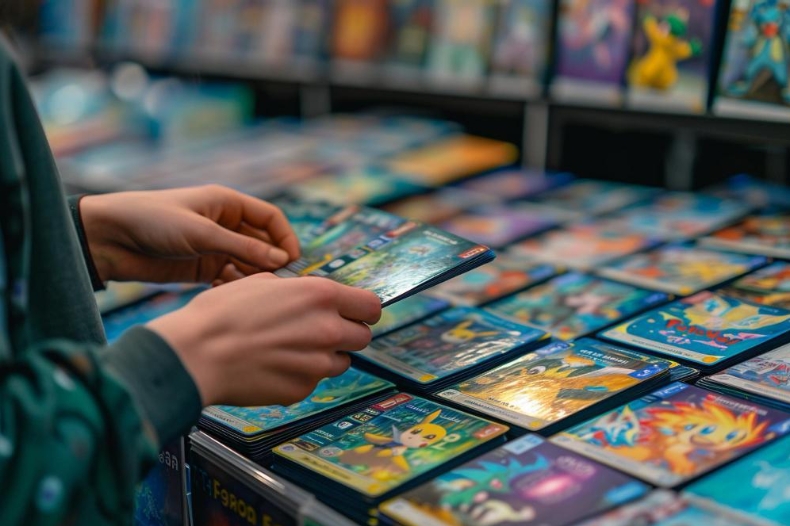
In an era when nearly everything has a digital counterpart, the enduring popularity of physical collectibles can seem almost nostalgic. Yet, while non-fungible tokens (NFTs), digital trading apps, and virtual assets have expanded the boundaries of collecting, millions of enthusiasts still prefer the tactile satisfaction of holding something real.
Take trading cards, for instance. The global Pokémon market illustrates this divide clearly, a world where collectors debate the value of virtual packs versus traditional card stock. Within that ecosystem, simplified Chinese Pokemon cards have become a unique example of how physical media continues to thrive even in an increasingly digital culture.
What explains this attachment to cardboard and ink in a time of screens and servers?
A Matter of Tangibility and Trust
Part of the answer lies in psychology. Physical collectibles engage the senses in a way pixels cannot, texture, weight, and even scent combine to trigger emotion and memory. For collectors who began in childhood, these sensory cues are powerful; they connect present-day adults to the excitement of unwrapping their first booster pack or trading cards at recess.
But it’s also about trust. Physical assets offer proof of ownership that doesn’t depend on servers or blockchain verification. There’s something reassuring about holding a tangible object that cannot be deleted, hacked, or lost in a data migration.
While digital collectibles promise convenience and scarcity backed by cryptography, physical cards come with a simpler form of security: visibility. If you can see it, store it, and protect it, you know it’s yours.
The Economics of Real-World Scarcity
The global collectible card market continues to expand, even as digital formats multiply. According to Forbes, physical collectibles have proven remarkably resilient, with niche markets often outperforming digital counterparts in both stability and resale value.
That’s because scarcity in the physical world is finite and visible. A rare 1999 holographic Charizard or a first-edition base set card exists in limited numbers, each with condition, provenance, and history that can be verified. In contrast, digital scarcity relies on code and consensus, which can shift with platforms, policies, or investor trends.
Collectors know this. They trust graded cards, sealed packs, and verified print runs because the metrics are tangible. Even modern releases, such as regional editions or language-specific sets, hold appeal precisely because they exist in a defined physical space. For example, simplified Chinese Pokémon cards appeal to collectors both inside and outside China due to their unique design, cultural value, and smaller production runs.
Scarcity, when you can touch it, feels real.
Emotional Value Over Algorithmic Ownership
Beyond economics, collecting is about identity, about belonging to a community that shares appreciation for a specific piece of culture. Physical items embody that connection.
Collectors often describe cards as memory objects: souvenirs of a particular time, place, or achievement. A binder filled with cards tells a personal story, one that evolves over years and can be shared with others in a tangible way.
Digital collectibles, by contrast, are harder to display or share physically. They live behind logins, screens, and software updates. For some, that’s efficient; for others, it feels detached.
As one card enthusiast recently posted on Reddit’s r/PokemonTCG forum: “I like NFTs as an idea, but my collection isn’t just about value, it’s about flipping through pages and remembering where each card came from. You can’t scroll nostalgia.”
That sentiment, echoed by thousands online, helps explain why physical trading cards maintain emotional gravity even as digital innovation accelerates.
The Collector’s Ritual
There’s also ritual. Physical collecting involves action, opening packs, organizing binders, cataloging, trading, protecting, grading. These are tactile behaviors that make the hobby immersive and satisfying.
Digital platforms can replicate parts of the experience, the thrill of discovery, the social element, but they lack the embodied process. Collectors talk about “pack weight,” “surface gloss,” and “print texture” because those details matter.
This ritual element also strengthens community ties. Local card shops, trading events, and conventions remain vibrant hubs where collectors connect face-to-face, compare finds, and swap stories. Even in online groups, much of the conversation centers on physical inventory: storage solutions, condition grading, and shipment security.
It’s proof that the collector’s instinct isn’t just about ownership, it’s about participation.
When Digital and Physical Worlds Collide
That doesn’t mean digital collecting is losing ground. In fact, hybrid models are emerging. Companies are releasing tokenized versions of physical cards, allowing collectors to own both the digital certificate and the tangible asset. Apps now let players scan their cards to track value or trade online while still maintaining physical ownership.
This convergence points to a future where the digital enhances, rather than replaces, the tangible. Instead of choosing one over the other, collectors may soon navigate both seamlessly, viewing NFTs and physical collections as two sides of the same passion.
The key difference lies in perception. Digital items satisfy curiosity and convenience, but physical ones satisfy something deeper: the need for presence.
Why the Future Is Still Tangible
As technology evolves, collectors may diversify their assets across virtual and physical realms, but the latter’s emotional and cultural weight won’t disappear. Every hobby that involves touch, vinyl records, printed books, photography, has proven resilient against full digitization.
In the same way, card collecting persists because it offers something the cloud cannot: permanence you can feel.
For many, owning a piece of the physical world is not about resisting change but about preserving connection. Whether it’s a holographic Charizard, a sports rookie card, or a simplified Chinese Pokémon card, the appeal remains the same, the joy of holding a story that’s yours, inked into paper, impossible to replicate.
Media Contact
Company Name: Danireon Cards & Games
Contact Person: Justin Gauthier
Email: Send Email
Address:250 Centrum Blvd, Unit 110
City: Ottawa
State: ON, K1E 3J1
Country: Canada
Website: danireon.com
